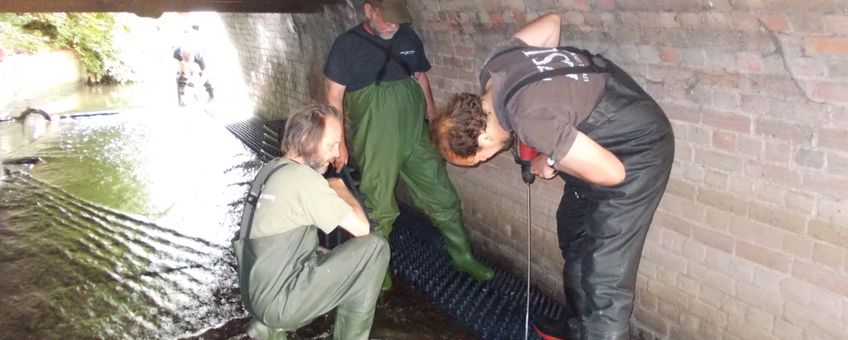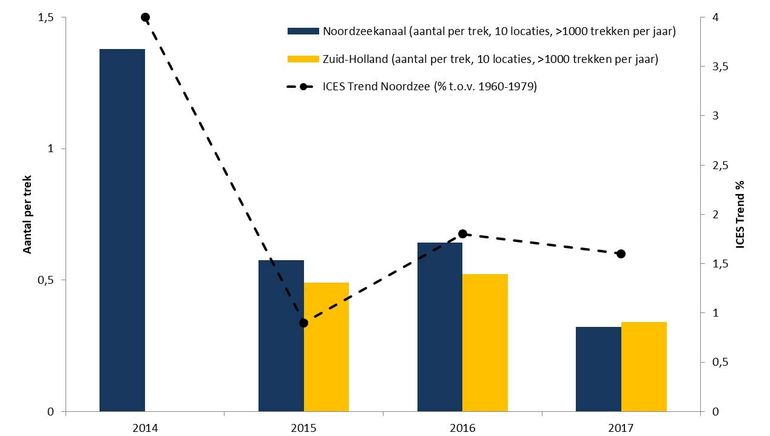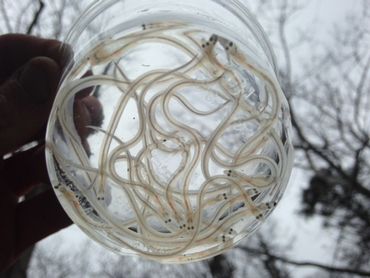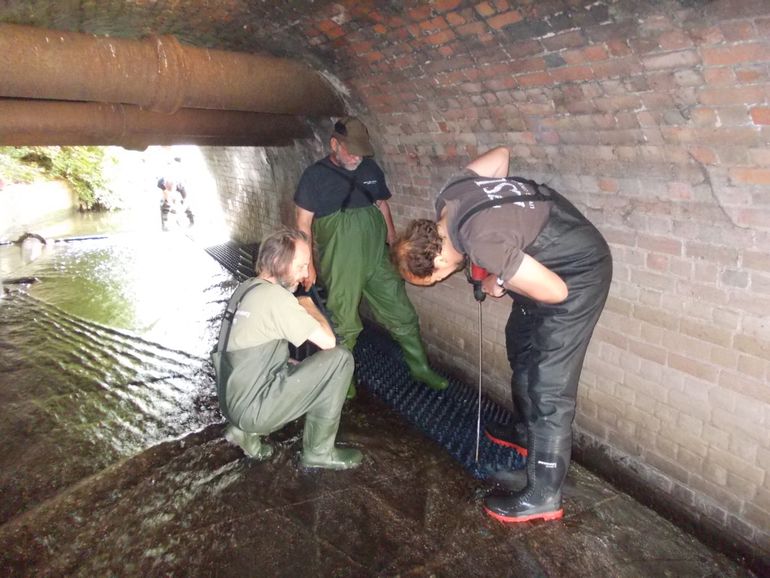
International Eel Count: migration of young eels started late but numbers are increasing
RAVON, World Fish Migration FoundationYoung eels migrate from sea to fresh water to grow up, unfortunately they come across a large number of migration barriers. Internationally every year a few thousand citizen scientists, that share a passion for eels, put an enormous amount of voluntary effort into catching, counting and helping juvenile eels (glass eels and one or more year older elvers) to overcome barriers and migrate upstream. This gives us vital data on the trends in eel populations and highlights where barriers stop eels from accessing freshwater habitat for subsequent building of permanent eel passes. This year’s ‘International Eel Count’ included efforts of citizen scientists on two continents at World Fish Migration Day, from the United Kingdom, the United States, Belgium and the Netherlands. A total of 1300 citizen scientists contributed to this years’ International Eel Count.
Slow start
In Europe many locations experienced a slow start due to cold weather and in some cases a high river discharge. At the Dutch coast warmer temperatures lead to a sharp increase in glass eel migration activity in April. This week we observed peak numbers for the Dutch season so far and the numbers are rapidly increasing in the last days. On average, the observed numbers at our 42 locations are in the same range as previous years in which recruitment was relatively low. With the monitoring season half way, we are very curious on how numbers will evolve and the final conclusions we can draw on this year’s recruitment.

Belgium

In the UK the season is late as well. In the Thames traps have been set at eleven barriers, the first pigmented glass eels and elvers (older life stages) have been caught. Full of anticipation we await higher numbers in the migration peak, which typically starts to pick up late in April and into May. In the Severn we experienced very low catches at the start of the elver season in February and we are now at the start of the peak season which will probably end mid may.

Early start in Hudson Valley
In the United States, New York’s Hudson Valley is home to twelve eel sampling sites that are daily checked by teams of about 750 trained volunteers. These citizen scientists include high school students, college interns, watershed group members, families, and retirees. The season started early with a nice surge around March’s full moon, and since then numbers in the estuaries tributaries have been up and down, likely due to unseasonably cold weather and rain. But things are warming up, and the migration continues!
Combined, all these efforts aim to make positive contribution to the populations of European and American Eel and recovery of their threatened stocks. Thanks to all volunteers!
Text: Chris Bowser, New York State Department of Environmental Conservation; Scott West, West Country Rivers Trust; Joe Pecorelli, Zoological Society London; Jeroen Van Wichelen, INBO, Belgium; Martijn Schiphouwer, RAVON; Herman Wanningen, World Fish Migration Foundation
Images: RAVON, Thames Anglers’Conservancy
